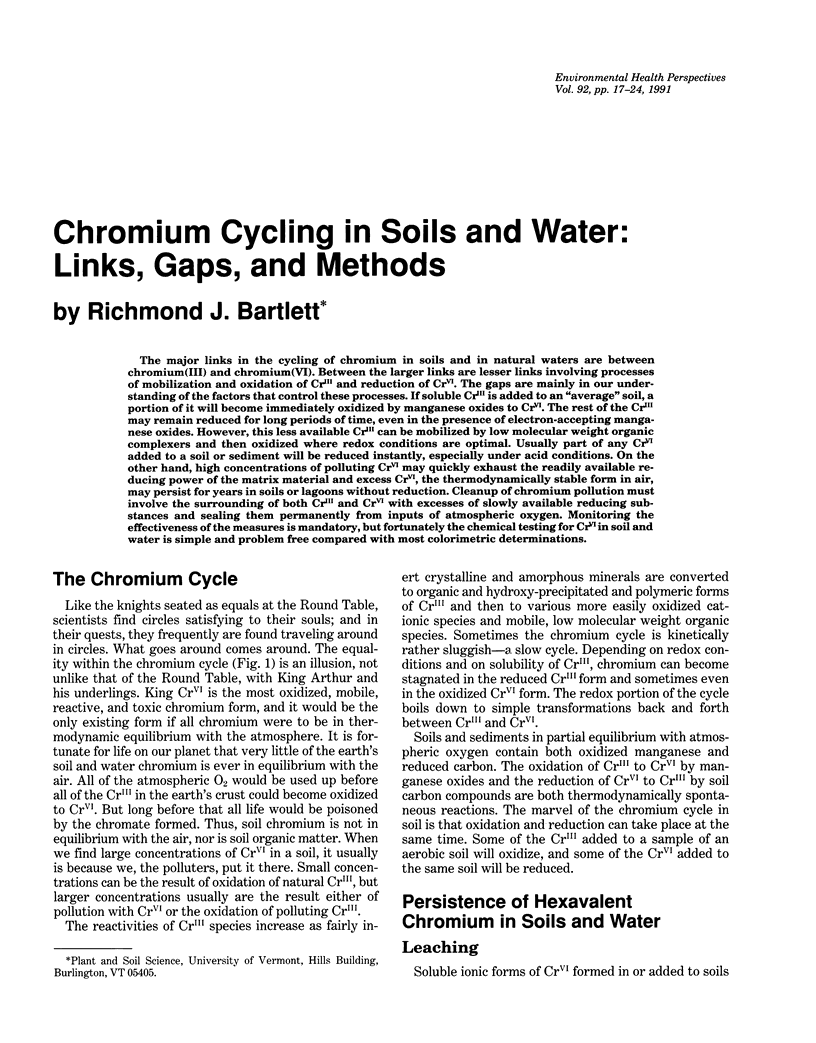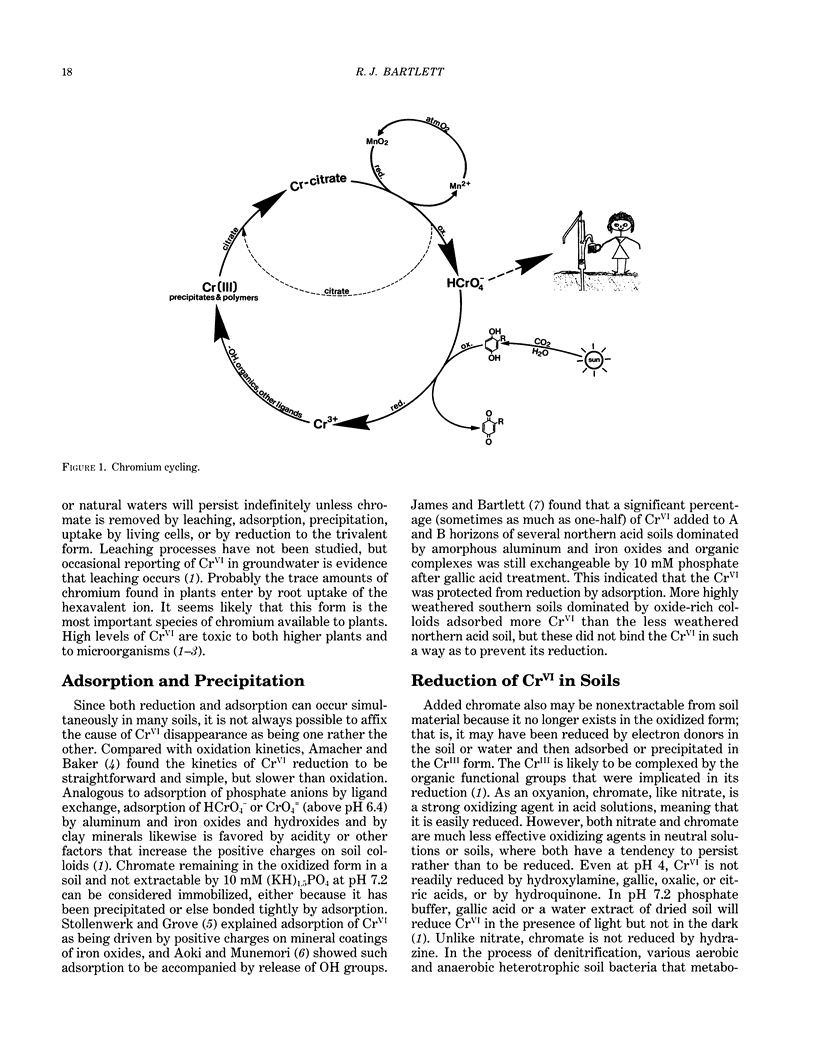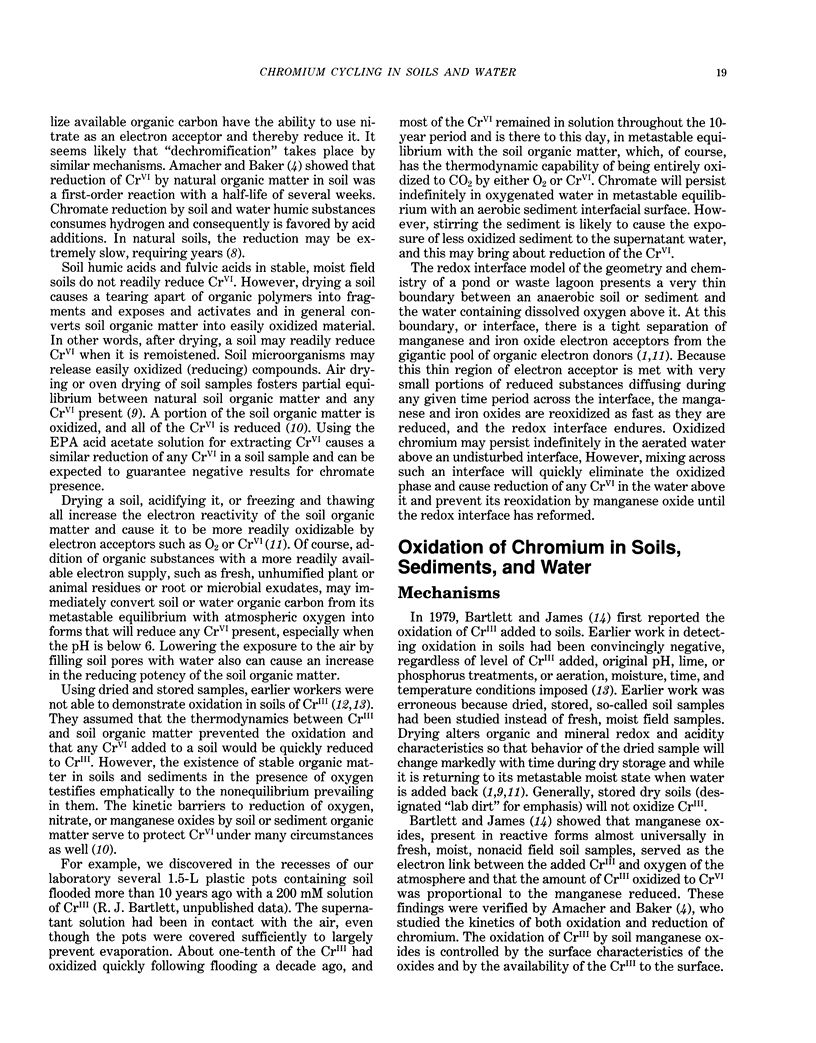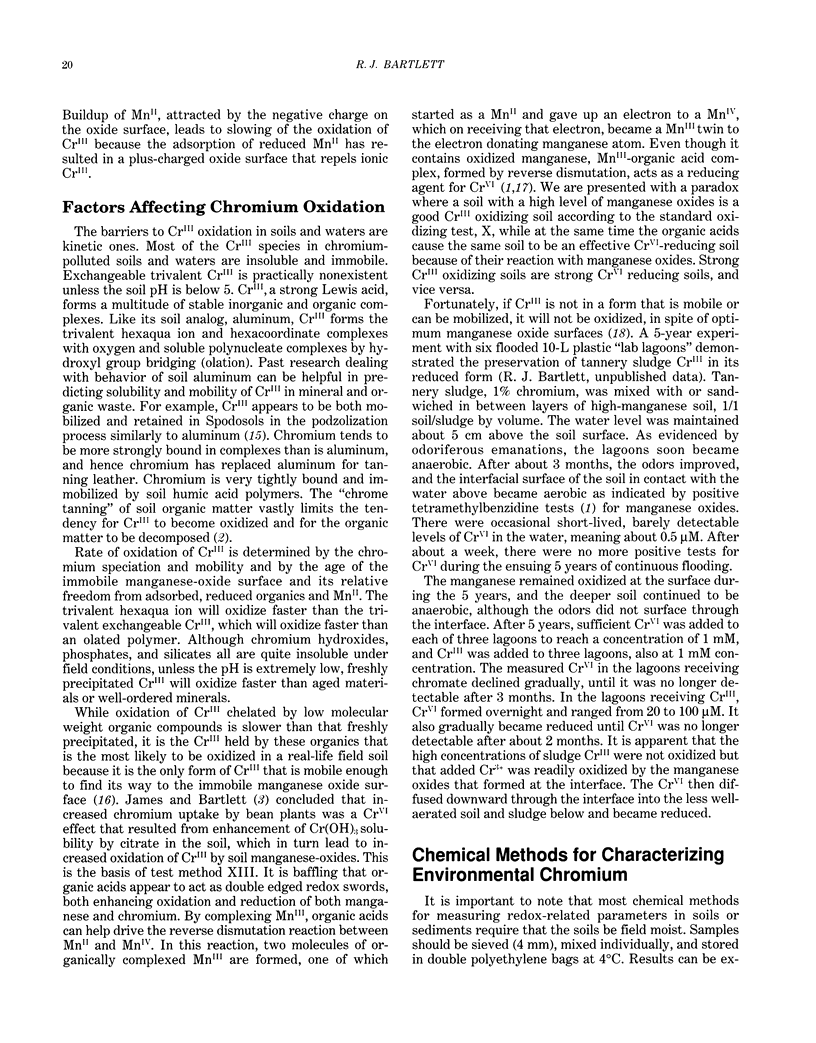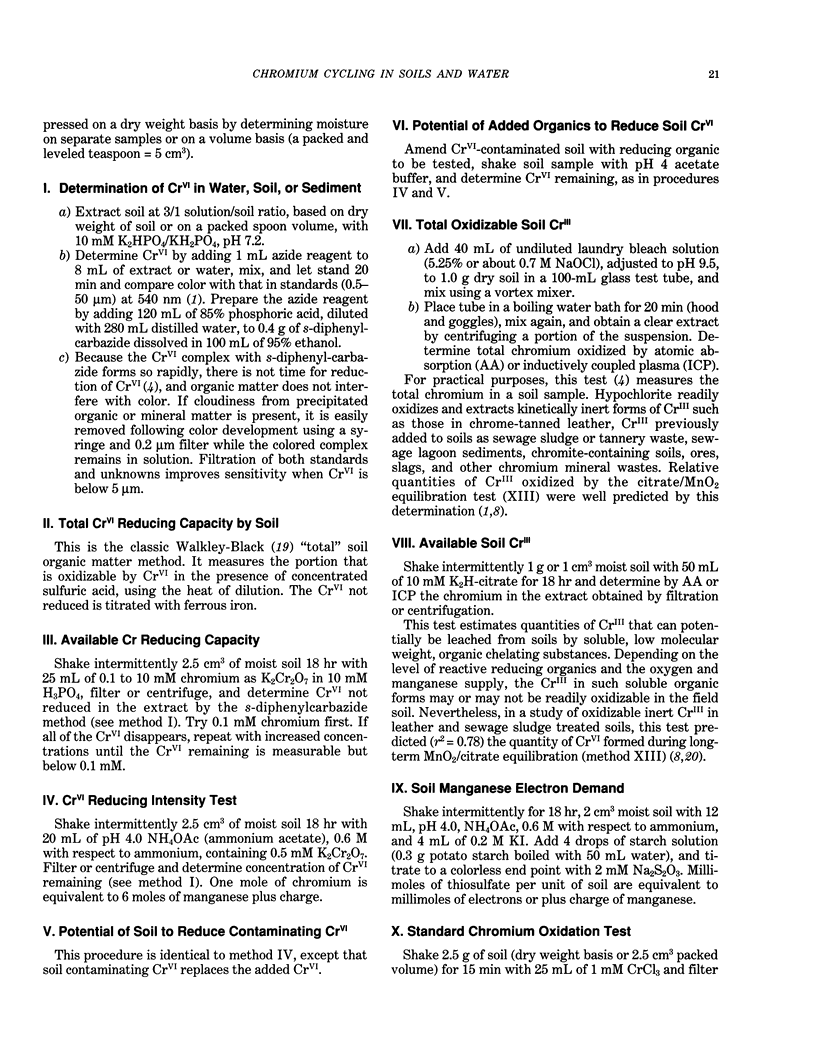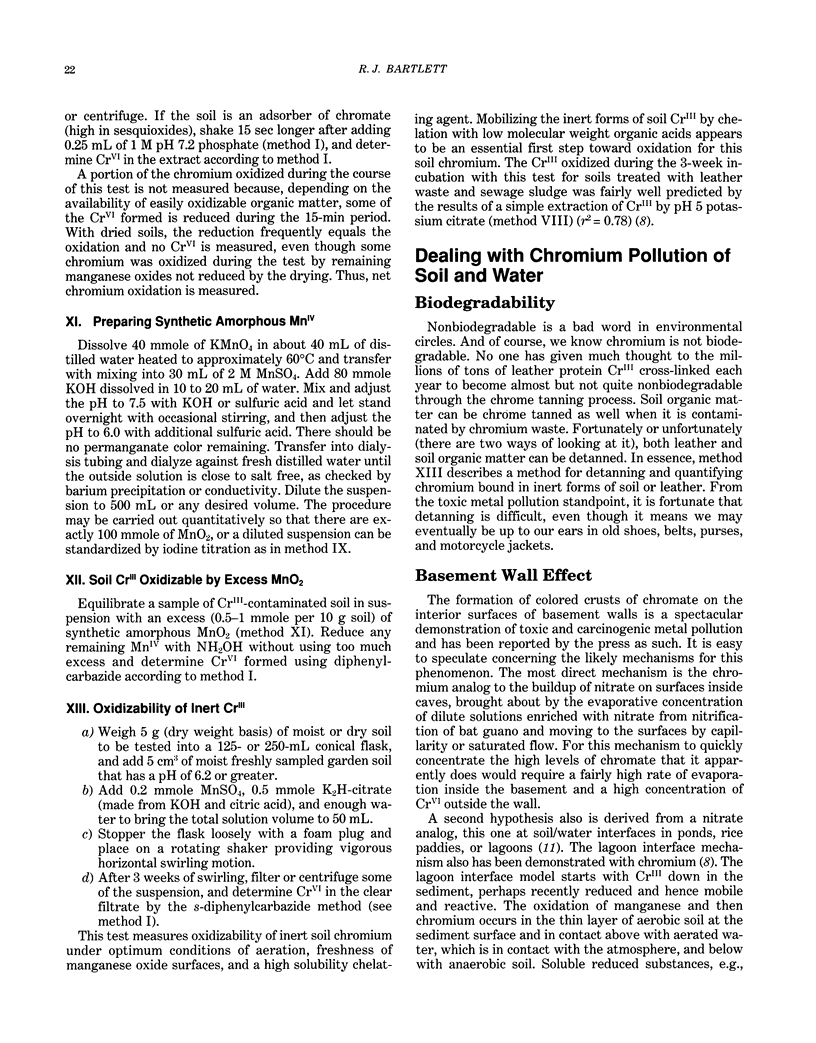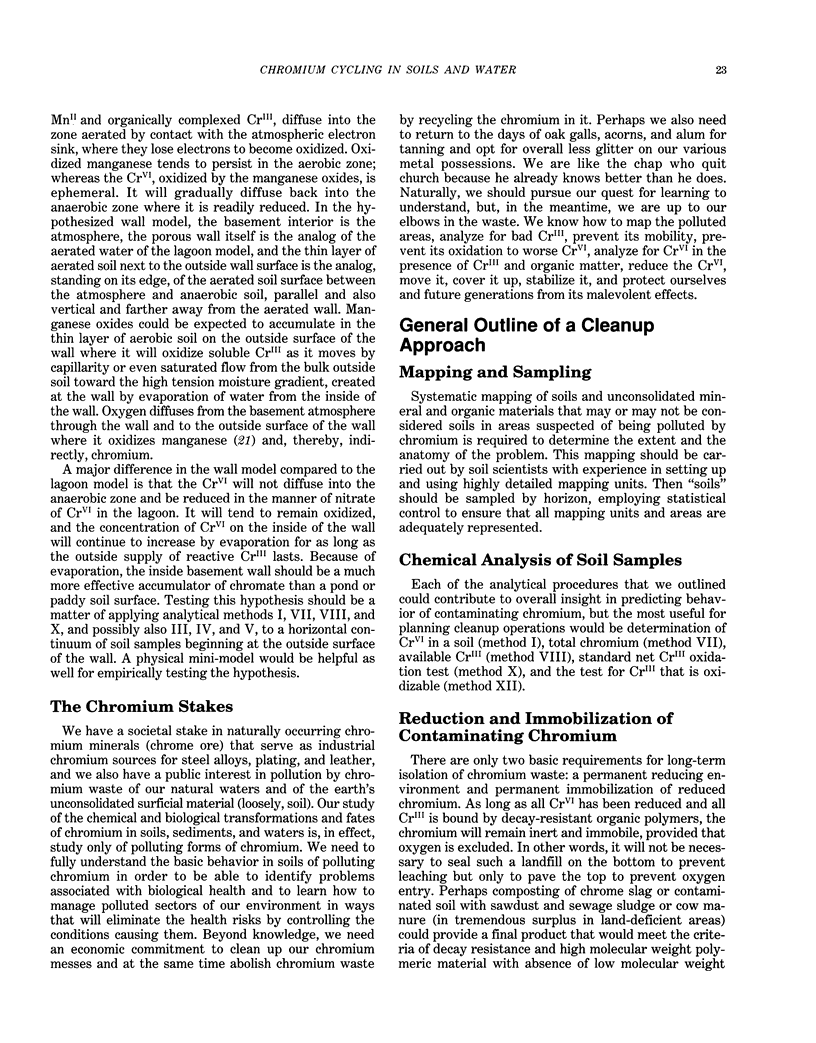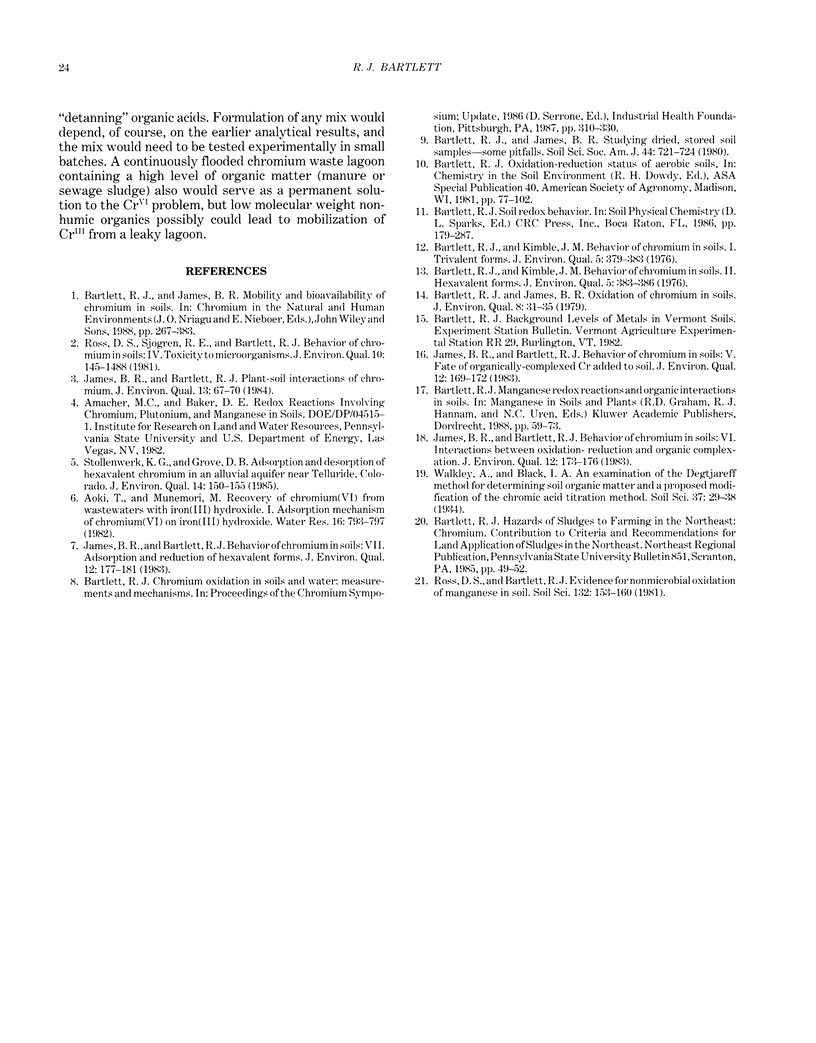Abstract
The major links in the cycling of chromium in soils and in natural waters are between chromium(III) and chromium (VI). Between the larger links are lesser links involving processes of mobilization and oxidation of CrIII and reduction of CrVI. The gaps are mainly in our understanding of the factors that control these processes. If soluble CrIII is added to an "average" soil, a portion of it will become immediately oxidized by manganese oxides to CrVI. The rest of the CrIII may remain reduced for long periods of time, even in the presence of electron-accepting manganese oxides. However, this less available CrIII can be mobilized by low molecular weight organic complexers and then oxidized where redox conditions are optimal. Usually part of any CrVI added to a soil or sediment will be reduced instantly, especially under acid conditions. On the other hand, high concentrations of polluting CrVI may quickly exhaust the readily available reducing power of the matrix material and excess CrVI, the thermodynamically stable form in air, may persist for years in soils or lagoons without reduction. Cleanup of chromium pollution must involve the surrounding of both CrIII and CrVI with excesses of slowly available reducing substances and sealing them permanently from inputs of atmospheric oxygen. Monitoring the effectiveness of the measures is mandatory, but fortunately the chemical testing for CrVI in soil and water is simple and problem free compared with most colorimetric determinations.
Full text
PDF